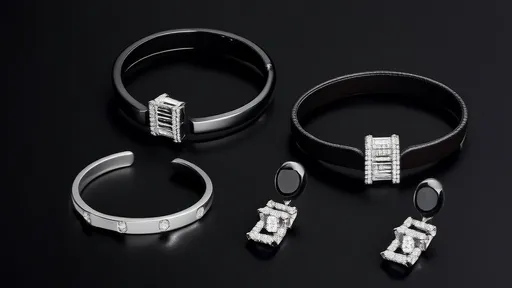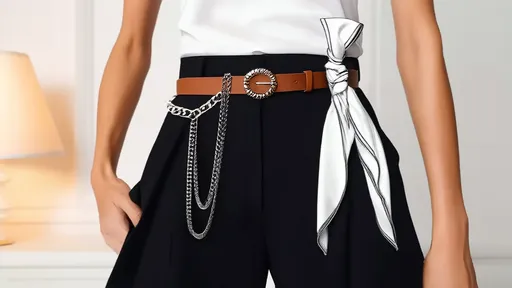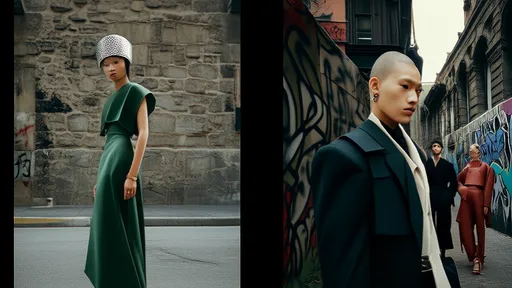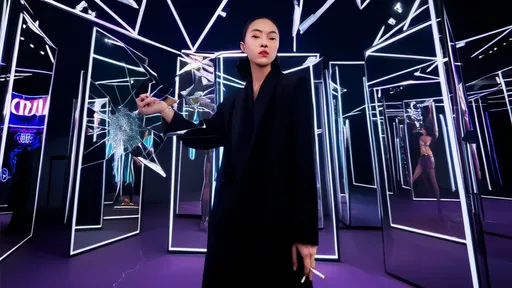The once-buzzing concept of "see-now-buy-now" (SNBN) in the fashion industry, which promised to bridge the gap between runway shows and consumer accessibility, has largely receded from the mainstream strategies of major brands. What began as a revolutionary idea to democratize fashion and capitalize on immediate consumer desire has, for the most part, been abandoned or significantly scaled back. The failure of this model is not attributed to a single flaw but rather a complex interplay of logistical nightmares, economic miscalculations, and a fundamental misunderstanding of both the fashion calendar and consumer psychology.
At its core, the SNBN model was a direct response to the digital age's demand for instant gratification. Brands envisioned a world where a consumer, inspired by a live-streamed runway show, could immediately purchase the exact garment they saw on their screen. This was meant to eliminate the traditional six-month wait between a collection's unveiling and its arrival in stores, a period during which hype could fizzle out and knock-offs could flood the market. The intent was to harness the potent energy of a viral moment and convert it directly into sales, creating a new, more efficient rhythm for the industry.
However, the vision spectacularly clashed with the entrenched realities of fashion production. The traditional fashion calendar, for all its perceived slowness, exists for a reason. Designing, sourcing materials, sampling, fitting, manufacturing, and shipping a collection on a global scale is a Herculean task that takes months of precise planning. The SNBN model required brands to have these collections fully produced, in inventory, and ready to ship before the show even began. This meant committing massive financial resources to production based purely on internal forecasts, with no pre-orders or buyer feedback to gauge demand. The financial risk was, and proved to be, astronomical.
The logistical strain was immense. For a large luxury house, producing enough inventory to meet the potential global demand sparked by a viral show is a near-impossible feat. It led to a dreaded lose-lose scenario: either the brand would severely under-produce, leading to mass customer frustration, stockouts, and missed sales opportunities, or it would over-produce, resulting in catastrophic levels of unsold inventory that would eventually need to be heavily discounted, eroding brand value and profitability. This inventory gamble became the primary reason many CFOs and CEOs grew cold feet.
Furthermore, the model disrupted the carefully curated ecosystem of wholesale and retail partners. Department stores and boutique buyers attend fashion weeks to select pieces for their stores months in advance. The SNBN model, by making collections available immediately directly from the brand, effectively cut these crucial partners out of the initial sales cycle. This created significant channel conflict and risked alienating the very retailers who provided brands with their primary revenue streams and physical footprint. It was a bold move towards direct-to-consumer that many brands were not yet ready to fully commit to at the expense of long-standing partnerships.
From a marketing perspective, the model also killed the "dream." The six-month gap between a show and a collection's arrival is not merely a logistical delay; it is a period of built-up anticipation, desire, and marketing narrative. Editors have time to feature looks in magazines, celebrities are dressed for events, and a story is woven around the collection. This prolonged exposure cultivates aspiration and solidifies the items' status as must-haves. SNBN's immediacy replaced this carefully cultivated desire with impulsive action, which, for high-value luxury items, is often not enough to drive a purchase. The thrill of the chase was eliminated.
Consumer behavior also did not align with the model's assumptions. While the idea of instant access is appealing, the purchase of a high-priced luxury item is rarely an impulse decision. It is a considered purchase, often requiring saving, planning, or at the very least, a moment of reflection. The pressure to buy it now felt less like an exclusive opportunity and more like a high-pressure sales tactic, which could be off-putting to the luxury consumer who values a curated and considered shopping experience. The reality was that most consumers were simply not prepared to spend thousands of dollars on a single item with the click of a button the moment a show ended.
In the end, the costs simply outweighed the benefits. The enormous upfront capital required for production, the high risk of inventory miscalculation, the potential damage to retailer relationships, and the inability to generate significantly higher sales to justify these risks led most brands to quietly shelve the strategy. It remains a fascinating case study in how technological possibility does not always equate to commercial viability. The industry learned that some traditions, like the delayed gratification of the fashion calendar, exist for solid practical and psychological reasons. While the dream of instant fashion access isn't entirely dead—it persists in small, limited-edition drops from certain brands—the grand experiment of overhauling the entire seasonal model has been largely deemed a failure. The future likely lies not in revolution, but in evolution: a smoother integration of physical and digital, and a more agile supply chain that can respond to demand faster, but not necessarily instantly.

By /Aug 21, 2025

By /Aug 21, 2025

By /Aug 21, 2025

By /Aug 21, 2025

By /Aug 21, 2025

By /Aug 21, 2025

By /Aug 21, 2025

By /Aug 21, 2025

By /Aug 21, 2025

By /Aug 21, 2025

By /Aug 21, 2025

By /Aug 21, 2025

By /Aug 21, 2025

By /Aug 21, 2025

By /Aug 21, 2025

By /Aug 21, 2025

By /Aug 21, 2025

By /Aug 21, 2025

By /Aug 21, 2025

By /Aug 21, 2025